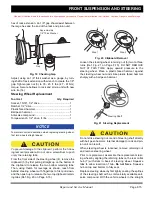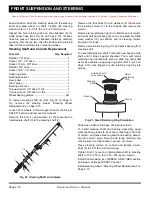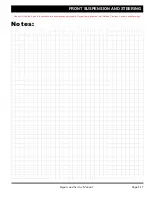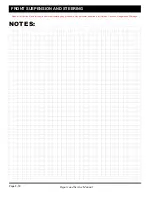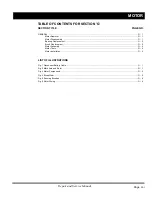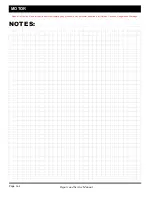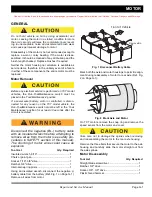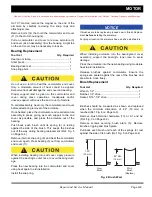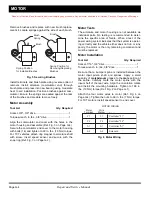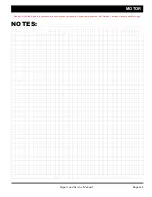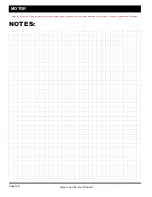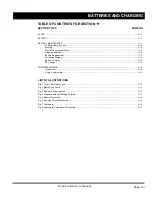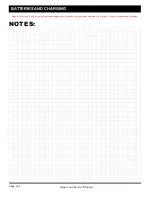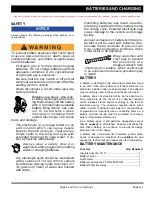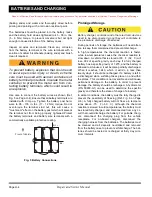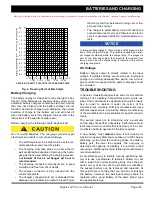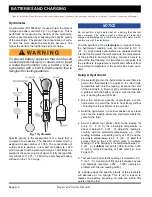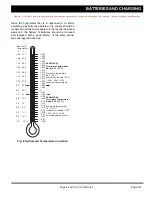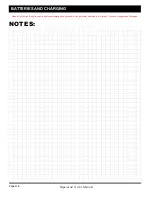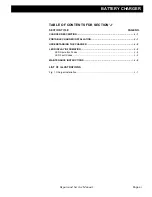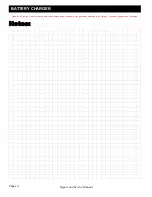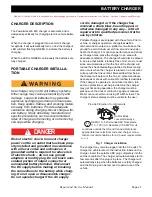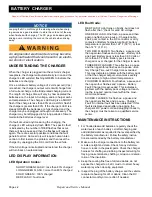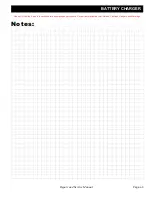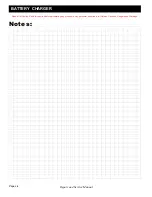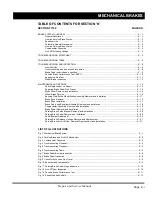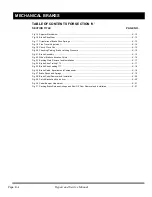
Page H-1
Repair and Service Manual
BATTERIES AND CHARGING
Read all of Section B and this section before attempting any procedure. Pay particular attention to all Notices, Cautions, Dangers and Warnings.
SAFETY
Always observe the following warnings when working on or
near batteries:
To prevent battery explosion that could result
in severe personal injury or death, keep all
smoking materials, open flame or sparks away
from the batteries.
Hydrogen gas is formed when charging
batteries. Do not charge batteries without
adequate ventilation. A 4% concentration
of hydrogen gas is explosive.
Be sure that the key switch is off and all
electrical accessories are turned off before
starting work on vehicle.
Never disconnect a circuit under load at a
battery terminal.
Batteries are heavy. Use prop-
er lifting techniques when mov-
ing them. Always lift the battery
with a commercially available
battery lifting device. Use care
n o t t o t i p b a t t e r i e s w h e n
removing or installing them;
spilled electrolyte can cause
burns and damage.
The electrolyte in a storage battery is an
acid solution which can cause seve re
burns to the skin and eyes. Treat all elec-
trolyte spills to the body and eyes with
extended flushing with clear water. Con-
tact a physician immediately.
A l w a y s w e a r a s a f e t y s h i e l d o r
approved safety goggles when adding
water or charging batteries.
Any electrolyte spills should be neutralized
with a solution of 1/4 cup (60 ml) sodium
bicarbonate (baking soda) dissolved in 1
1/2 gallons (6 liters) of water and flushed
with water.
Overfilling batteries may result in electro-
lyte being expelled from the battery during
the charge cycle. Expelled electrolyte may
cause damage to the vehicle and storage
facility.
Aerosol containers of battery terminal pro-
tectant must be used with extreme care.
Insulate metal container to prevent can
from contacting battery terminals which
could result in an explosion.
Wrap wrenches with
vinyl tape to prevent
th e p o s s i b i l i t y o f a
dropped wrench from
‘shorting out’ a battery, which could result
in an explosion and severe personal injury
or death.
BATTERY
A battery is defined as two dissimilar metals immersed
in an acid. If the acid is absent or if the metals are not
dissimilar, a battery has not been created. The batteries
most commonly used in these vehicles are lead acid.
A battery does not store electricity, but is able to pro-
duce electricity as the result of a chemical reaction
which releases stored chemical energy in the form of
electrical energy. The chemical reaction takes place
faster in warm conditions and slower in cold conditions.
Temperature is important when conducting tests on a
battery and test results must be corrected to compen-
sate for temperature differences.
As a battery ages, it still performs adequately except
that its capacity is diminished. Capacity describes the
time that a battery can continue to provide its design
amperes from a full charge.
A battery has a maximum life, therefore good mainte-
nance is designed to maximize the available life and
reduce the factors that can reduce the life of the battery.
BATTERY MAINTENANCE
Tool List
Qty. Required
Insulated wrench, 9/16" ...............................................1
Battery carrier ..............................................................1
Hydrometer ..................................................................1
Battery maintenance kit P/N 25587-G01 .....................1
Battery Protective Spray ..............................................1
NOTICE

